#modern pictograms
Explore tagged Tumblr posts
Text

#modern art#art#visual arts#pictograms#art history#signs#caution signs#road signs#wronghands#john atkinson#webcomic#humor#funny
68 notes
·
View notes
Text

⚫⚪ brand new retro
2 notes
·
View notes
Text
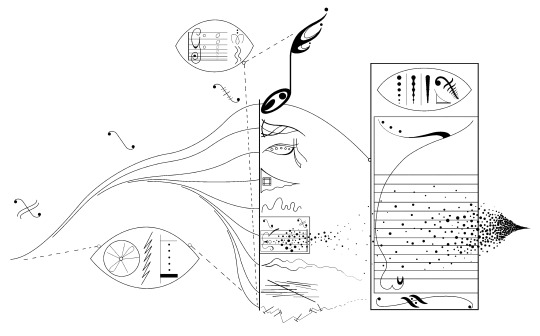
youtube
#contemporarymusic#conceptualart#graphic score#drawing#pictorial music#contemporary art#contemporary music#noise music#dadaism#dada#noise#pictograms#music#notation#graphic notation#composition#composing#cryptogram#cryptography#sound art#prepared instrument#avantgarde#electroacoustic music#electroacoustic#experimental music#contemporary#modern music#musique concrete#Youtube
4 notes
·
View notes
Text
headcanon people, i need help coming up with ideas for ancient mudwing artifacts. here's what i have so far-
Pieces of a giant bowl that indicates the sharing of prepared food.
Deep bowls used for soups.
Painted pitchers that indicate the creation and consumption of mead and beer.
The stummel of a pipe fashioned to look like the head of a python. Indicates consumption of recreational drugs.
A massive vessel used for fermenting food items. Once again indicates the preparation of food.
A petrified wooden totem that seems to have been carved after petrification. As a result, it is the most well preserved piece of mudwing wood art and it has become an important cultural symbol in the modern era.
Half of a highly detailed wooden crocodile mask made for a seemingly massive dragon. Its purpose and origins have been highly debated, but it is most likely a depiction of the deity Genesis used for ritual purposes.
Carved dragon bones detailed with pictograms of war.
Teeth carved into pendants. Cicadas and frogs are common subjects, more rarely seen are fish, caiman heads, and fruit.
Large wooden guiros once thought to be weapons of war, now known to be instruments.
if you have any other weird mudwing headcanons, let me know i need them for undisclosed reasons
250 notes
·
View notes
Text
Cosmere Characters in IKEA
The title says it all, really.
1. Adolin & Shallan
Adolin: This place is such a maze!
Shallan: Yeah, it kinda reminds me of my time in the chasms with Kaladin.
Shallan: There could be a chasmfiend made entirely of hex keys around any corner.
Adolin: You’ve already mapped this place in your head, haven’t you?
Shallan: Well, duh.
2. Kaladin & Teft
Kaladin: Ha, look at the size of this bed! What kind of spoiled lighteyes needs a bed this big??
Teft: Kaladin, lad, that’s a bed for two people...
Kaladin: ...
Kaladin: I knew that.
3. Sebarial & Palona
Sebarial: Genius, really, setting up all of these fake rooms to make people imagine their homes looking like this.
Sebarial: Makes you want to buy way more than you came in for.
Sebarial: And it all seems cheap, but it sure adds up!
Palona: Mmm...and the pathing really forces you to see everything, no matter what you’re looking for.
Palona: Urithiru is mazelike already--think Dalinar would give you a floor to set up something like this?
Sebarial: Are you SURE you don’t want to marry me?
4. Dalinar & Stormfather
Dalinar: I think it’s good for people to build their own furniture.
Dalinar: I never felt as clear-headed as I did when I dug that latrine that one time.
Stormfather: Bah, this flimsy wood could never stand up to a storm.
Dalinar: Most people keep their furniture inside.
Stormfather: I’m listening and learning here.
Dalinar: What?
Stormfather: What?
5. Lopen & Rock
Lopen: Now, see, people say the REAL fun is the food!
Rock: Ha! These meatballs are not as good as chouta with fried cremling claws, but they’re still pretty good!
Lopen: Of course! Nothing beats chouta!
6. Wyndle & Lift
Wyndle: Oh, this is SO exciting!
Wyndle: Look at all of these WONDERFUL chairs!
Wyndle: I can’t wait to add some of these to my chair garden!
Lift (dragging her feet): Is this the LAST time I let you pick our activity.
7. Denth & Tonk Fah
Denth: You know what I hate about being a mercenary?
Denth: People think you have no sense of style.
Denth: And sure, interior decorating isn’t a big part of our life.
Denth: But just look at this pillow I chose and tell me it wouldn’t look great on any modern couch.
Tonk Fah: Hey, that old lady you stabbed to get that pillow seems to be coming around.
Denth: And people NEVER appreciate the lengths we got to to get a good deal!
8. Szeth & Nightblood
Szeth: I like this place.
Szeth: There is no profane stone anywhere, and the seemingly endless maze of empty rooms devoid of all life reminds me of the inside of my own head, only they took out the screams.
Szeth: And some of the plastic fruit is nice.
Nightblood: That’s great but can we get back to my thing now?
Szeth: That sofa wasn’t evil, sword-nimi.
Nightblood: Then why was its name looking at me with those beady eyes?!
Szeth: I think the umlaut is just part of the spelling, sword-nimi.
Nightblood: I think we should destroy it, just in case.
9. Siri & Syl
Siri: Look at this!! A tiny frying pan!
Syl: No, look at this!! It’s a blue stuffed shark!
Siri: Look at how colorful this rug is!
Syl: I don’t even smoke, but this ash tray is shaped like a COW!
Siri: I can’t believe Vivenna and Kal said we “couldn’t be trusted in the marketplace”
Syl: I know! We make such good decisions!
10. Jasnah & Navani & Elhokar
Jasnah: It is nice of them to include pictogram instructions, so that even men can assemble this furniture.
Navani: Engineering for men. Very progressive of them.
Elhokar: How am I supposed to screw in all these screws with just this hex key?! Also, these dowels definitely do NOT fit in this hole! And I am definitely missing some pieces!!
Elhokar (muttering): I bet Kaladin could build this bookcase.
Jasnah: Should we help him?
Navani: Give it five more minutes.
#cosmere#cosmerelists#Adolin#Shallan#Kaladin#Teft#Sebarial#Palona#Dalinar#Stormfather#Wyndle#Lift#Lopen#Rock#Szeth#Nightblood#Siri#Syl#Denth#Tonk Fah#Jasnah#Navani#Elhokar
290 notes
·
View notes
Note
On one hand, discoursing about the morality of wanting to fuck the aproximately 54x20 amorphous blob of pixels that we call the slugcat is bound to be fruitless On the other hand, I simply wish to point out that slugcats posses the ability no one but Homo Sapiens Sapiens and perhaps Neanderthals did- the use and understanding of complex pictograms, paintings, symbols. No animal on earth unprompted starts to paint or draw. They can be taught by humans to slather paint on a canvas, but that is not the same as creating art with understanding of what you are doing. Art and use of decorations are widely used as a point of proof of when modern human behaviour has emerged. The most blatant example of this is Gourmand, who in the ending cutscene straight up just makes cave paintings that clearly also tell his story to the curious onlookers. This also indicates that Spearmaster doodles with his needles due a trait natural to their species, and not due to their genetic alterations- not that SRS would have a strong incentive to give Spearmaster the ability to draw if their purpose is just to efficiently deliver a pearl from point A to point B. Even without the more slugcats expansion, the overseer communicates to survivor by displaying the simple contours of a slugcat head, or something even more abstract like the shelter sign, direction arrows, and I'd even say pointing motions require a more complex understanding of language. Presumably, the overseer would not waste it's energy displaying abstract icons of a concept if the slugcat could only respond to direct pictures and maybe eventual association, even more so when the overseers appear to be able to display complete pictures in game. Slugcat might not inherently recognize the danger and food signs, but neither do you because it's simply a foreign script. To most of you the experience would be nigh similiar if you saw anything in Arab or Cyrillyc script flash. What does this say about the fuckability of slugcats? Idk man and I don't really care, it's just basic and bland furry porn the normies are pearl clutching over yet again, this is an argument about the slugcats's intelligence for the sake of the topic being intresting on it's own right.
.
22 notes
·
View notes
Text
Translating the Harappan Script
Translating the Indus Valley script remains a formidable challenge, primarily because it has not been definitively deciphered yet. Scholars are still working on various hypotheses and approaches, but no one has succeeded in providing a definitive translation. However, there are several methods and steps that researchers follow to try and make sense of the script:
1. Collect and Catalog Inscriptions
The first step is gathering and cataloging all the known inscriptions of the Indus Valley script. This includes texts found on seals, pottery, tablets, and other artifacts. Researchers try to identify recurring patterns and symbols in these inscriptions, which might represent words, phrases, or concepts.
2. Identify and Classify Symbols
The Indus script contains hundreds of unique symbols. These symbols are thought to represent:
Pictograms: Images or symbols that may represent objects or ideas.
Phonetic signs: Symbols that may represent sounds or syllables (like in a syllabary or alphabet).
Ideograms: Symbols representing ideas or concepts.
Researchers try to classify these symbols, determine how they might be used in different contexts, and look for patterns in their usage (e.g., recurring symbols or clusters of symbols).
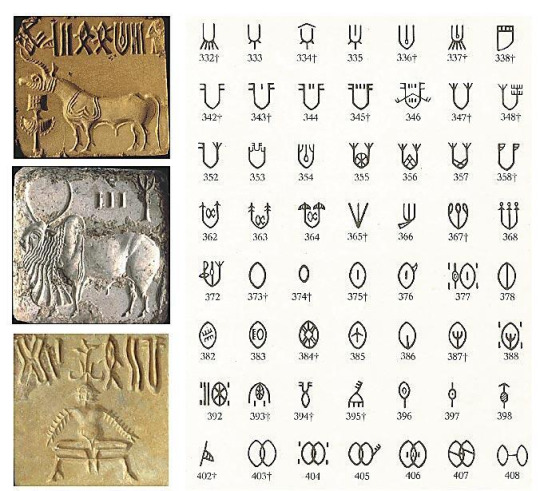
3. Look for Repetitive Patterns
The most promising approach to deciphering the script is recognizing recurring sequences. If certain symbols appear frequently or together, they might represent common words or grammatical structures. For instance, some symbols consistently appear together on seals, suggesting they might represent a name or title. Identifying such repeated patterns is a major part of the effort to decode the script.
4. Hypothesize About Phonetic Values
Since there’s no known Rosetta Stone to directly link the Indus script to a known language, some researchers hypothesize that the script might represent sounds (like the alphabetic systems) or syllables (like the syllabaries). They analyze the way symbols are combined and try to propose phonetic values for certain characters. This step is speculative, but it's a vital area of research.
5. Compare with Known Languages
Some scholars attempt to compare the Indus script with the known languages of the region. The two main hypotheses are:
Dravidian Hypothesis: Some suggest that the language might be related to the Dravidian languages spoken in southern India. However, no clear connections have been established.
Austroasiatic or Indo-European Hypothesis: There are also theories suggesting that the language could be related to other language families, though these ideas have not gained broad acceptance.
Comparing the script with related languages is difficult, though, as no direct linguistic evidence exists to link the Indus Valley script with any language family.

6. Use Computational Tools
Modern computational techniques, such as statistical analysis and pattern recognition, are being used to analyze the script. Researchers create algorithms to look for statistical patterns in the frequency and combinations of symbols, attempting to uncover hidden linguistic structures. These approaches are still in early stages, but they could provide a breakthrough in understanding the structure of the script.
7. Look for Contextual Clues
Context is essential in understanding any written language. Researchers study the locations and types of objects the inscriptions are found on. For example, most Indus script inscriptions are found on seals used for trade, which could suggest that the script was primarily used for administrative or commercial purposes. Looking at the context of the inscriptions might provide clues about their meaning.
8. Consider the Social and Cultural Context
Finally, understanding the social, cultural, and historical context of the Indus Valley civilization is crucial. The script was likely used to convey information about trade, religion, administration, and possibly mythology. Knowledge of the civilization’s practices, beliefs, and economy could provide additional insights into what the script might represent.
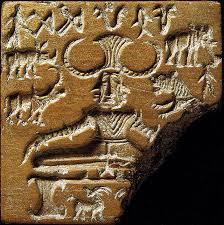
Pashupati Seal
Challenges and Current Status
No Bilingual Inscriptions: Unlike Egyptian hieroglyphs, there are no known bilingual inscriptions that could act as a “key” to the script.
Fragmentary Data: Most inscriptions are very short, often only a few characters long, making it difficult to gather enough context to understand their meaning.
Multiple Interpretations: There are various competing theories about the nature of the script, its language, and its function. The lack of consensus on these fundamental issues complicates efforts at translation.
Conclusion
Despite these efforts, translating the Indus script remains a work in progress. While various researchers have proposed partial solutions or interpretations, none of them have been universally accepted. As new data and computational tools emerge, it’s possible that scholars might come closer to deciphering the script, but for now, it remains one of the great mysteries of ancient writing systems.

#history#archaeology#indian history#indian#indus valley#culture#museum#scripture#epigraph#linguistics#inscription
16 notes
·
View notes
Text
enjoy this unrefined excerpt
the finished product will probably have less profanity
Corimer Vesperian could trace his heritage back a long fucking way, okay? A long fucking way, because that’s one of the primary requirements to be a member of the Magisterium. Requirement one, as much magical talent as it is humanly possible to pack into one person (and I do mean humanly, because the Magisterium would never consider anything else, much like how people with pale skin are never immigrants, only expats). Requirement two, perfection—in every possible way: physical, mental, hell, the Magisterium will check your hairline and count the freckles on your skin when it comes to determining whether or not you are a worthy candidate. And requirement three, a pedigree that must be bound in multiple volumes, ideally in leather, ideally with gold-embossed text on the front, and the only pedigrees worth having are the ones where the oldest volumes can only be read by a few select scholars in modern Minrathous, because nobody speaks Old Tevene that old anymore.
Corimer Vesperian had all three. Not because he was a member of the Magisterium, per se, but because the requirements for the position his descendants were made to hold are all that and more.
But if you look at the oldest volumes of Corimer Vesperian’s pedigree, the scholars in Minrathous can’t even read them, because they don’t recognize the alphabet, let alone the language. It’s some kind of runic script, maybe, or… pictograms? Perhaps something in that liminal space in between. They don’t know. Nobody knows. They might get somewhere if they started asking a different kind of scholar—the kind, maybe, that you can only find in the Shaperate—but nobody in Minrathous would do that because they would never consider anything else. Much like how people with pale skin are never immigrants, only expats. And Corimer Vesperian, and the Vesperian before that, and the Vesperian before that, have met with the Magisterium’s approval.
This means that Corimer Vesperian’s youngest son, who has every volume of that pedigree on a shelf in the Argent Spire, can trace his heritage back so far that heritage ceases to be a concept and becomes something else—inheritance. Something buried in the way he works that makes him a child of… not just Vesperians, not just magisters, not just the Imperium, but something much older and deeper. Something that runs so faintly through his veins that even the blight can barely recognize it, but it’s there. And when Ashur says, “I’m fine,” it’s… he’s not fine, not exactly, but the thing is, it’s not just Ashur speaking.
The scion of the Vesperians, it’s said, is the sum of Tevinter’s greatness. The Venatori once described him as “the fruit of at least four great bloodlines.” Not all of those great bloodlines come from Corimer Vesperian; it’s something not everyone in the Magisterium bothers to acknowledge, but Ashur had a mother, too—someone chosen for Corimer Vesperian because she met every requirement: the magic, the perfection, the pedigree.
Ashur owns no volumes of his mother’s heritage because those went to a sibling of hers, most likely an eldest son. This is how things work in the Tevinter Imperium. Ashur doesn’t know and he’s never asked—this is not a priority for him and, given the company he keeps, it would feel almost hypocritical to wonder—but he knows the broad strokes. His father knew more. The Magisterium likely knows more still. What they don’t know, though, is lost to time and the lies ancient Tevinter chose to perpetuate to build itself into what it once was. Ashur’s mother was human, of course, in the same way that people with pale skin are never immigrants, only expats. Her father and mother were human; their fathers and mothers were human. Or at least, their ears were softly rounded, their eyes the blue and brown and hazel that a Magisterial pedigree allows.
But, if you go far enough back, someone might have had green eyes. Someone might have had ears that were… round, still, but in a more chiseled way. And farther back than that, and then farther back still, someone had violet eyes. Someone had ears that were… not round, not this far back, but another shape that no one in modern Minrathous would acknowledge. And farther back than that, and then farther back still, someone had no body at all, but made one for herself. And the inheritance of that body, shared over thousands of years, became the mother of Ashur Vesperian.
And that body, the one that was made… well, it’s ironic, isn’t it? That body was the first home of the blight that now lives in Ashur Vesperian’s veins; its creator; its corruptor.
They say the blight recognizes its own. That this is the reason Grey Wardens can sense darkspawn, and darkspawn can sense Grey Wardens. There are other things, too, other senses, other songs, but Ashur Vesperian doesn’t know about those. The Magisterium doesn’t know about those (and wouldn’t care if it did). But blight calls to blight, and the blight in Ashur Vesperian’s veins… it doesn’t feel like something that shouldn’t be there. Not quite. Almost. But not quite.
But that body—the first home of the blight—Ashur Vesperian’s mother’s mother’s mother’s mother’s mother’s… well—that body was stolen from another. And the body it was stolen from—that body, shared over thousands of years, became the father of Ashur Vesperian.
And that body, the one that even the Shaperate has forgotten… well, it’s ironic, isn’t it? That Ashur Vesperian, the Imperial Divine, the man groomed from birth to be the embodiment of the Maker in the mortal realm… well, even in the Magisterium, that was never meant to be literal.
But here Ashur is, in the mortal realm, and the blight in Ashur Vesperian’s veins… it doesn’t feel like something that shouldn’t be there. Not quite. Perhaps almost, but not quite.
7 notes
·
View notes
Text
Humans have been artists before they invented written language.
That's wild to think about, and yet makes sense...
Art is such a deeply human form of expression, so inherent to us that some of our oldest ancestors left their traces behind in the shape of art.
From the Wikipedia page "Prehistoric Art"

And from the Wikipedia page "History of writing"

And if you look at ancient writing systems, you will often find pictograms or hieroglyphs being used to convey meaning.
While art on its own doesn't always purposefully seek to convey a message, still some of the prehistoric cave paintings have served modern archeological research in better understanding the lives of our ancestors, the things that were of importance to them, what their everyday lives looked like.

(Image source: Screenshot from the film "Cave of Forgotten Dreams", uploaded to Wikipedia under a public domain license)
These rhino paintings from the Chauvet Cave in France fascinate me. There are no species of rhino endemic to France anymore. The people who made these paintings shared their lives with species of animals that are extinct to us.
The same cave, which is an UNESCO world heritage site, harbors more interesting paintings:

(Image source: Photograph taken by "HTO" of a replica of the lion paintings in the Chauvet cave, made for the Brno Museum Anthropos in the Czech Republic, uploaded to Wikipedia under the public domain license)
Lions! Many lions. These looks like head anatomy sketches to me. It's fascinating to have paleontologic evidence for prehistoric extinct animals that was made by human hands. But what did the artists try to convey here? Is it a message? Is it drawing just for joy and admiration of the creatures? Maybe it's akin to a modern watercolor painting of a landscape. "This is something beautiful that I saw during my lifetime".
It just fills me with childlike wonder and a sense of connection to the past to think that me, sitting in front of my drawing tablet, creating pictures with the strokes of my pen, is not so different from a cave-dwelling human being, over 30'000 years ago, painting the resemblances of everyday creatures onto rock walls with charcoal and red ochre.
From the Wikipedia page "Chauvet Cave":

Seriously, go check out these articles on Wikipedia, it's a beautiful and endearing look into the past :)
#art#prehistoric art#prehistoric animals#homo sapiens#chauvet cave#cave paintings#art and writing#communication#archaeology#palentology
14 notes
·
View notes
Text
Post-Literate
Post-Literate, Pictogram Games, 2011
Post-Literate takes on one of my favorite genres, transhumanism. I think it's the only transhuman game in which your characters are all illiterate.
They're not idiots, reading just stopped being necessary. Artificial intelligence (like, real AI, not the limited kind that's impacting every industry like a bomb right now) is ubiquitous and powerful, and humans rely on it for basically everything. You want to know something, just ask the open air - there's probably an AI nearby who can reply. If icons and warning signs don't make things obvious, they clearly weren't designed well enough. People who can read in this society are like someone in the modern day living "off the grid".
It's not a post-scarcity world, though. No replicators, no unlimited resources, no free energy, just so much computing power no one can run out of it. Biotech, nanotech, and computation are all massively advanced, but each of them has limits: bio is big and powerful but slow, nano is quick and precise but small-scale, and computation can't affect the real world without the other two.
The game has two typical modes of play. The first is more exploratory - what do humans do in a world where machines can do everything? The second posits a group of rogue AIs who consider humanity a drain on the world's resources, as opposed to the vast majority who are programmed to preserve humanity. You get caught up in the rogues' plots, either as a pawn of one side or the other (AIs do find humans so very hard to read), or as an ally.
Mechanically, the game essentially runs on Fate with PbtA playbooks. I'm sure plenty of other folks have done it. Given the publication date, though, the current batch of Fate stuff wasn't out yet, so this is focused around the then-newly-released Strands of Fate implementation. Definitely crunchier than one would expect from a Fate game.
The game could use more examples - a lot of examples - for aspects, stunts, and so forth. For example, the game says "use this wealth system to represent your connections with other people", but then... that's it. I can figure it out, but I'm also the GM who's read over hundred games.
Much as I love the concept of the game, I think it just didn't lean hard enough into the feel of the game - which is a shame, because that's exactly what Fate games have to do. There should be systems for mind games against AI opponents, fast-talking people into giving you access to their systems, parkour chase scenes... and you can do that, because it's Strands of Fate and it'll handle it just fine, but it's not built for it. It's too generic.
Art, including the cover, is black-and-white line drawings in a very cyberpunk style. To their credit there are almost no robots (as an AI why would you bother with running a drone 99 days out of 100?), but the tech depicted seems a bit understated for what the game describes.
Pictogram Games made Post-Literate and another game about using symbols for magic. It had the most breakable and least handicapped-accessible magic system I've seen in a long time, so buckle in for that one when I get to it.
#ttrpg#imaginary#indie ttrpg#rpg#review#transhumanism#powered by the fatepocalypse#People talk about overwhelming crunch in early-90s games but there was a big resurgence in the late 2010s too#cronch cronch
15 notes
·
View notes
Text
Smena 8M – The True ‘Lomo’ Experience 🎞️📷
The Smena 8M holds a special place in the history of lomography—and in my own journey with film photography. It was my first true Lomo camera, manufactured by the iconic LOMO factory (Leningrad Optical Mechanical Association, Russian: Ленинградское Оптико-Механическое Объединение), the namesake of the lomography movement.

Design and Build 🌟
Produced between 1970 and 1990, the Smena 8M embodies late Soviet-era aesthetics with a utilitarian design that in the late 00s was cherished as ‘hipster.’ The camera’s body is mostly plastic—apart from the metal plate on the front and the lens—giving it a charming toy-camera vibe. But don’t let this toyish exterior fool you; this camera is capable of producing surprisingly high-quality photos, thanks to its glass lens.
Specs and Features 📋
The Smena 8M is a 35mm fully manual camera, boasting:
40mm f/4–f/16 glass lens
1/250 to 1/15 shutter speed, and a bulb mode
A dial on the front of the lens allows you to manually adjust the aperture settings based on the film's ISO. Meanwhile, the weather pictograms at the base of lens mount are used to set the shutter speed according to the current lighting conditions.

The Smena 8M works best with 100 or 200 ISO film, though higher ISOs can handle cloudier conditions (with a risk of overexposure in bright sunlight). For advanced users, the fully manual nature of the camera allows precise control over your settings, making it a fantastic tool for learning the relationship between aperture, shutter speed, and ISO.
Shooting Experience 🎥
Using the Smena 8M requires some intuition and practice. To shoot, you:
Set the focal length using the pictograms or numbers on the lens.
Use the simple viewfinder to frame your shot (keep in mind it’s not entirely accurate).
Rely on your skill and creative instincts to adjust settings and compose your shot.
The Smena 8M thrives in sunny conditions at f/11, making it ideal for outdoor shooting. The unpredictability of the camera can lead to happy accidents—one of the reasons lomographers love it.
Creative Potential 🎨
The bulb mode opens up exciting possibilities for light painting and double exposures, two techniques I experimented with the most. While results can be hit-or-miss, the joy of experimenting with film is part of the experience.

My Experience 📸
While I enjoyed my time with the Smena 8M, I ultimately passed it on to someone else. As a neurodivergent person, I found the fully manual controls and lack of a conventional viewfinder a bit unnerving. That said, it remains one of my most cherished film cameras for its creative potential and unique aesthetic. I’ll be sharing my photos under the #smena 8m tag on my blog.
If you’re curious about experimenting with lomography or want to explore analog photography, the Smena 8M is a wonderful starting point. It’s a camera that truly embodies the spirit of lomography: embracing imperfection, creativity, and the joy of the unexpected.
Modern Glam-Up 🎀




Here’s a modern reinterpretation of the classic Lomo Smena 8M, decked out in Barbie pink with a 'Hello Kitty' inscription and pastel lilac colours!
I couldn’t find any information confirming if this was a factory-produced model, so it’s likely a custom creation. Either way, these vibrant colors transform the camera into not just a tool for photography, but a bold eye-catching accessory.
Have you used a Smena 8M? Share your thoughts and experiences in the comments!
📢 This post was created for the Lomography Community on Tumblr. If you love experimental photography, we’d love to have you join in! 🌟
📸 Photo Credits: Images of the Smena 8M featured in this article are courtesy of Photo Thinking. Custom camera design images sourced from a private seller listing on Avito.
#photographers on tumblr#photography#lomography#ishootfilm#film photography#analog photography#film#filmisnotdead#analogue#expired film#original photographers#vintage#lomo#kodak#medium format#smena 8m#smena#film is not dead#hello kitty#pink
4 notes
·
View notes
Note
So Emily as joy bringer probably speaks basically every language which includes Spanish. Sera doesn't she doesn't have to work with her subjects directly so she hasn't picked any up. (Sera probably speaks a lot of old dead languages like Latin and ancient Egyptian because that was before Emily when she had to do some of her work.) Sera once she starts dating Carmilla wants to learn Spanish so Carmilla starts teaching her. Now Carmilla doesn't know Emily speaks Spanish so while teaching Sera is very flirty and often makes some dirty jokes or innuendos involving what she wants to do with Sera that go over Sera's head but not Emily's who is sitting in the corner trying to pretend like she doesn't exist. Eventually Sera is practicing and gets stuck and without thinking asks Emily for help who gives it. Carmilla who is in the room realizes that Emily is fluent is Spanish and turns red realizing Emily understood basically everything she said to Sera and Sera realizes that Carmilla may not have been entirely honest about what some of the things she said to Sera translate as.
OMG, you're right! 😂😂 Emily probably has to know a bunch of different languages to keep the Winners happy! ...Unless everyone in Heaven can magically speak the same language somehow.
But that's horrible for the plot, so we will work under the assumption that Emily is like a living dictionary of all modern languages, so she can speak to her subjects. Maybe once in a while, she needs Sera's help with ancient pictograms or hieroglyphics from before her time. Love this!
And also yes to Carmilla saying sexy things to her lover that she thinks she doesn't understand, but someone else does. We needed a good setup for some awkward comedy. I can only imagine Carmilla's face when she realizes holy shit, Emily understood that. And then having to explain it to Sera later. We need more plot reasons to get Carmilla and/or Sera to become embarrassed, flustered messes. 😂😂 Write that down, Viv!
(Also, gosh, that conversation with Emily afterward would be equally awkward. I think Carmilla would rather have that conversation with Emily than Sera, though)
#hazbin hotel#carmilla carmine#carmilla hazbin hotel#sera hazbin hotel#emily hazbin hotel#ask#anon#fan theories#sera x carmilla#carmilla x sera
17 notes
·
View notes
Note
But how do I communicate yes and no? What if head nods mean fuck you and then they'll feel attack and attack me? What if ✓ is a slur to them? Thumbs up means some very kinky stuff?
I've actually had time to sit and talk about this with another person instead of making my own head spin in circles, and though I'm not sure this is the answer you really want, this is the one we came up with together.
You don't even go to the island in the first place. You leave them be.
Assuming the meteorite doesn't kill them, whatever pathogens you carry onto the island certainly will. They are an uncontacted tribe, last I checked I don't know if that has changed in the last several years, meaning they may not have had the same chance of building immunity to the modern illnesses of the wider world.
As far as communication goes should leaving the island and it's people alone is just not be an option, assuming they don't kill you on sight, it'll be extremely difficult. Pictograms would be easiest, as you could try to show maybe the sun or another star falling from the sky. At the very least, there is a chance they could recognize that. And unfortunately, we decided that there probably is no maybe. If you go to the island and tell them the sky is falling, that kind of has to be it.
2 notes
·
View notes
Text


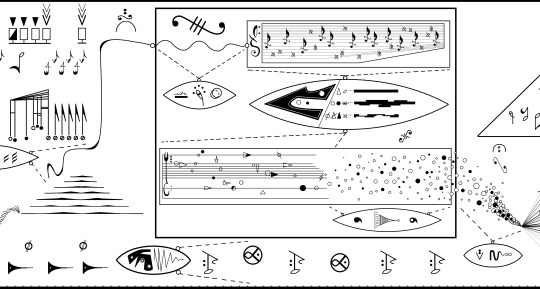


youtube
#contemporarymusic#conceptualart#graphic score#drawing#pictorial music#contemporary art#contemporary music#noise music#dadaism#dada#noise#pictograms#music#notation#graphic notation#composition#composing#cryptogram#cryptography#sound art#prepared instrument#avantgarde#electroacoustic music#electroacoustic#experimental music#contemporary#modern music#musique concrete
0 notes
Text
ARTWORK
Cy Twombly
The First, Second, and Third Part of the Return from Parnassus, 1961
Chicago Institute of Art




Cy Twombly often titled his early 1960’s works with elaborate evocations of art, myth, and allegory. This painting, for example, refers to Mount Parnassus, the fabled home of Apollo and the Muses, which became known as the center of poetry, music, and learning in ancient Greece. Twombly combined regular, diagrammatic forms, numbers, and grids together with irregular, nature-based pictograms and suggestive or intuitive references to bodily processes - sexual and otherwise.
This combination, seen in so much of Twombly's work, connotes the dualities of mind and body. In their exuberant scale and color, the artist's works of 1961 also reflect his response to the great architectural spaces of Rome, his home, embracing the city's grandeur and decadence in its ancient, Baroque, and modern incarnations.
What I connect with…
These massive works felt like drawings on paper. I loved the way the artist was able to capture this sketchy quailty. They felt fresh and not over worked. Although I may like some of Twombly's other work more, these were an absolute pleasure to see. The scale is so inline with the abstract expressionist ideals, and the artist's exploration of gesture was thrilling.
16 notes
·
View notes
Text
The thunderbird is a legendary creature in particular North American indigenous peoples' history and culture. It is considered a supernatural being of power and strength.
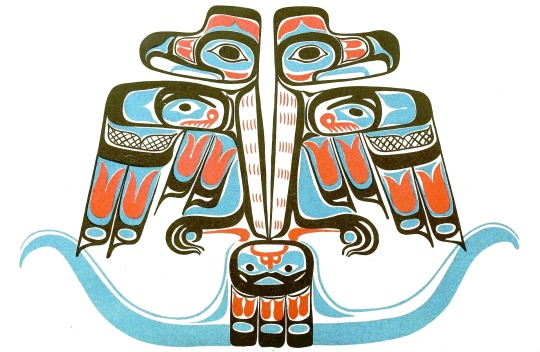
It is especially important and frequently depicted in the art, songs, and oral histories of many Pacific Northwest Coast cultures, but is also found in various forms among some peoples of the American Southwest, East Coast of the United States, Great Lakes, and Great Plains. In modern times it has achieved notoriety as a purported cryptid, similar to creatures such as Bigfoot and the Loch Ness Monster.
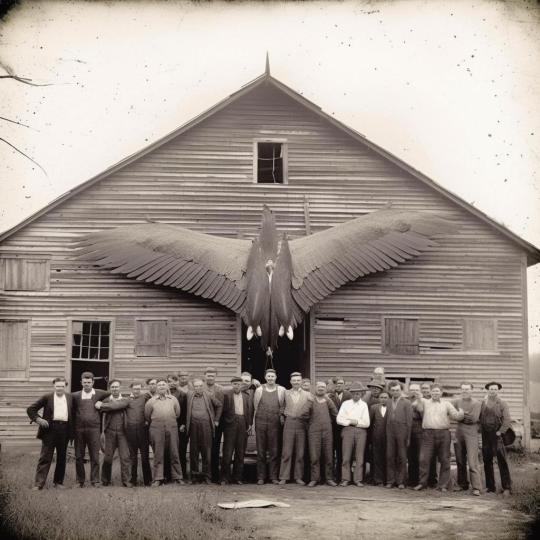
The thunderbird is said to create thunder by flapping its wings (Algonquian), and lightning by flashing its eyes (Algonquian, Iroquois).

In Algonquian images, an X-shaped thunderbird is often used to depict the thunderbird with its wings alongside its body and the head facing forwards instead of in profile.

The depiction may be stylized and simplified. A headless X-shaped thunderbird was found on an Ojibwe midewiwin disc dating to 1250–1400 CE. In an 18th-century manuscript (a "daybook" ledger) written by the namesake grandson of Governor Matthew Mayhew, the thunderbird pictograms varies from "recognizable birds to simply an incised X".
42 notes
·
View notes